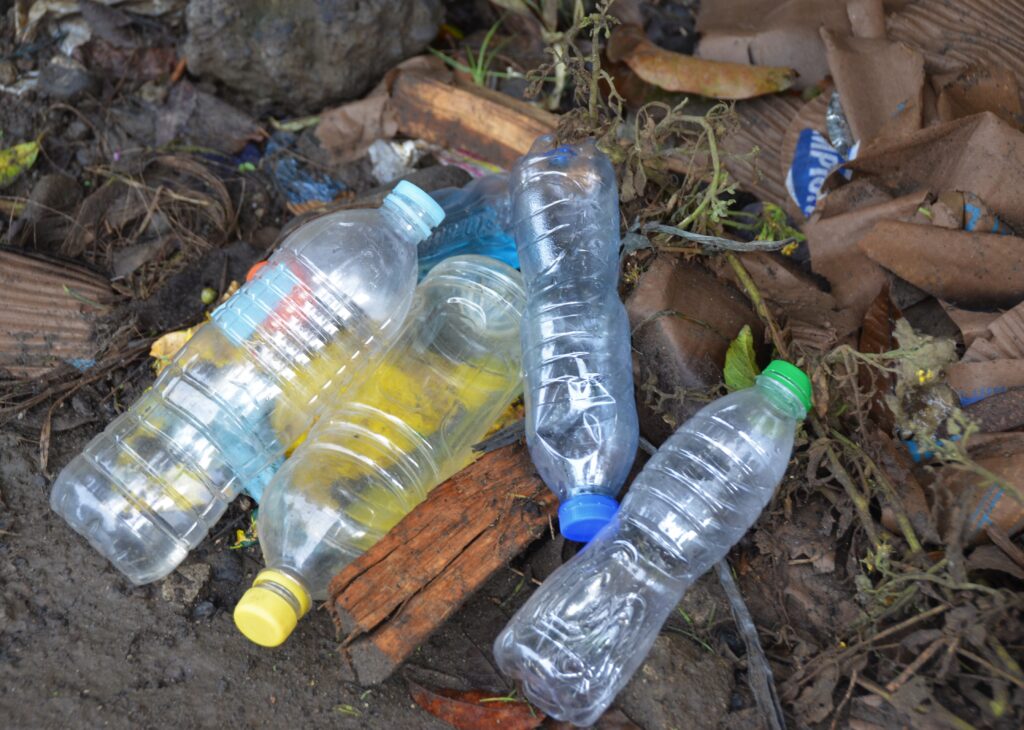When people talk of single-use plastics, they always think of plastic bags and sachets. But single-use plastics also include plastic bottles, which are typically used to store liquids such as water and soft drinks.
Plastic bottles became popular with both manufacturers and customers because they are lighter, cheaper and easier to transport than glass bottles. Their biggest advantage is their superior resistance to breakage, in both production and transportation. As a result, the food industry replaced glass bottles with plastic bottles.

It was just a matter of time before plastic bottles were used to package water. However, what most Filipinos don’t know is that plastic water bottles are not sustainably made.
“Plastic bottles are commonly made from polyethylene terephthalate, which is petroleum-based and non-renewable,” said theonemovement.co’s Ariana Palmeiri. If you fill a plastic water bottle to about 25-percent full, that’s about how much oil it took to make the bottle.
One million plastic water bottles are sold every minute globally, according to The Guardian. That’s about 20,000 bottles every second.
Water left in a plastic bottle for a long time is not safe to drink. Although water, in and of itself, does not go bad, the plastic bottle it’s contained in does “expire.”
“Plastics contaminate the liquid bottle once expired or exposed to excessive heat, including exposure to sunlight or hot cars. The toxic chemicals that are contained in this plastic will enter the water, not only affecting the taste of the water but also creating serious health implications for the consumer as well,” warned drinkwater.com.
Although some PET bottles are approved for reuse, many manufacturers and consumer advocates urge the public to limit their PET bottles to one-time use only, especially those that show even slight signs of wear and tear, such as cracks or dings.
“These allow chemicals to more readily leach out of them. Keep in mind that tears can be microscopic and hard to see. That’s one reason why one-use-only plastic bottles aren’t recommended for reuse,” wrote healthline.com’s Corey Whelan.
“Use plastic bottles with caution,” Whelan added. “Never heat or reuse them.”
Most of the plastic water bottles bought are thrown away after the water is consumed. Only 9 percent of plastic gets recycled. Most of the plastic find their way to landfills, where a single bottle can take up to 1,000 years to break down.
When landfills leak, as they inevitably do, the waterways and water sources of surrounding communities are at risk from the landfill runoff that carry toxic chemicals.
Plastic bottles also end up in seas and oceans.
“At any given time, the plastic bottle is one of the top three pieces of trash found in the ocean,” said 4ocean.com. There, they end up choking or being ingested by fish, coral, birds and other marine animals.
If you drink from plastic bottles, never leave them in your cars. Or take them to the beach or pool as this could heat the bottles to a temperature that’s deemed unsafe.
Another concern: plastic water bottles can harbor harmful bacteria. “Which is why most manufacturers recommend you use them only once,” according to WebMD.com. “In truth, bacterial growth in water bottles is a much bigger concern than chemical leaching.”
Bacterial growth can happen quickly from the ordinary use of touching one’s mouth to the bottle. “Even unfinished beverages left at room temperature can have startling bacteria growth throughout the day,” warned WebMD.
